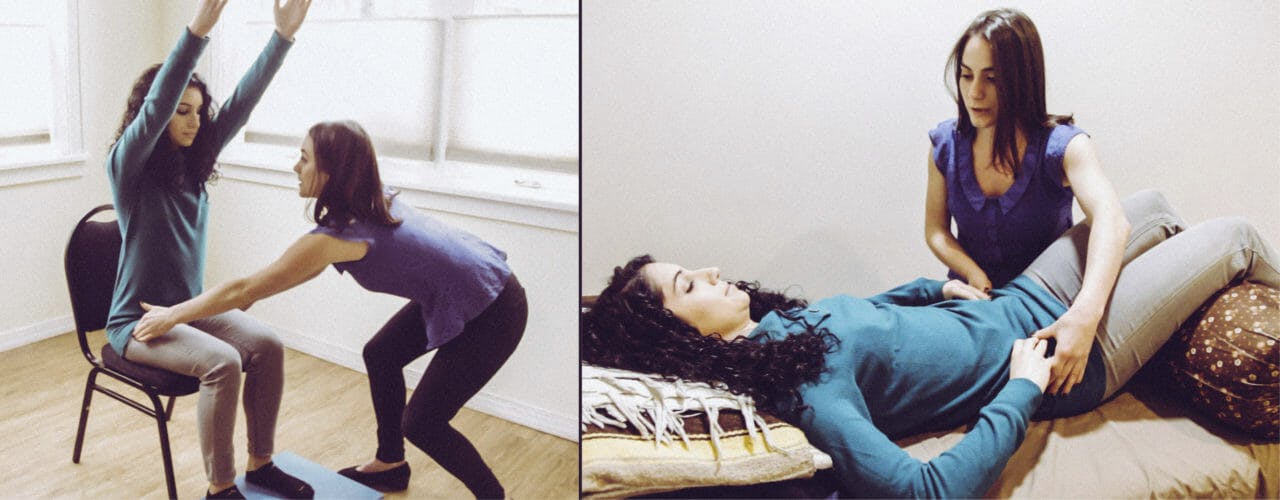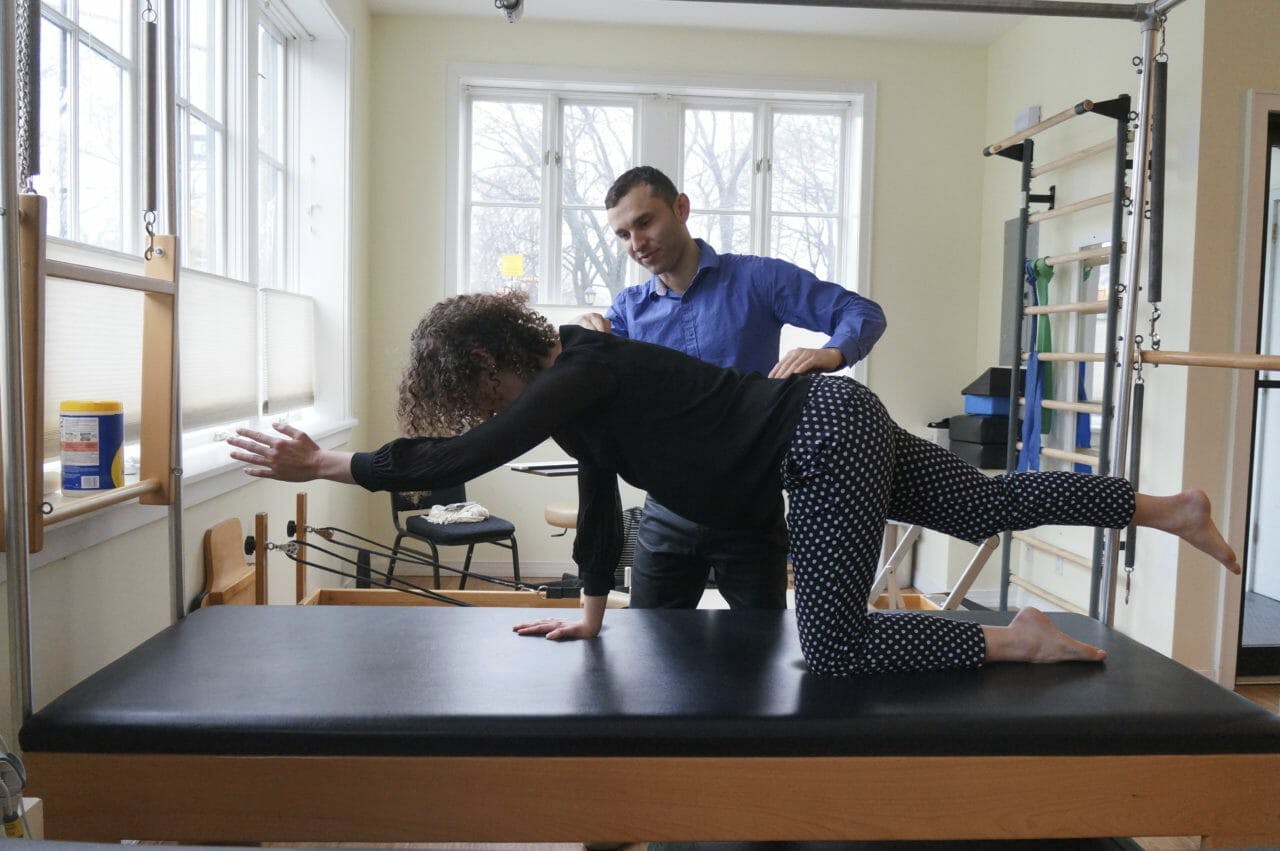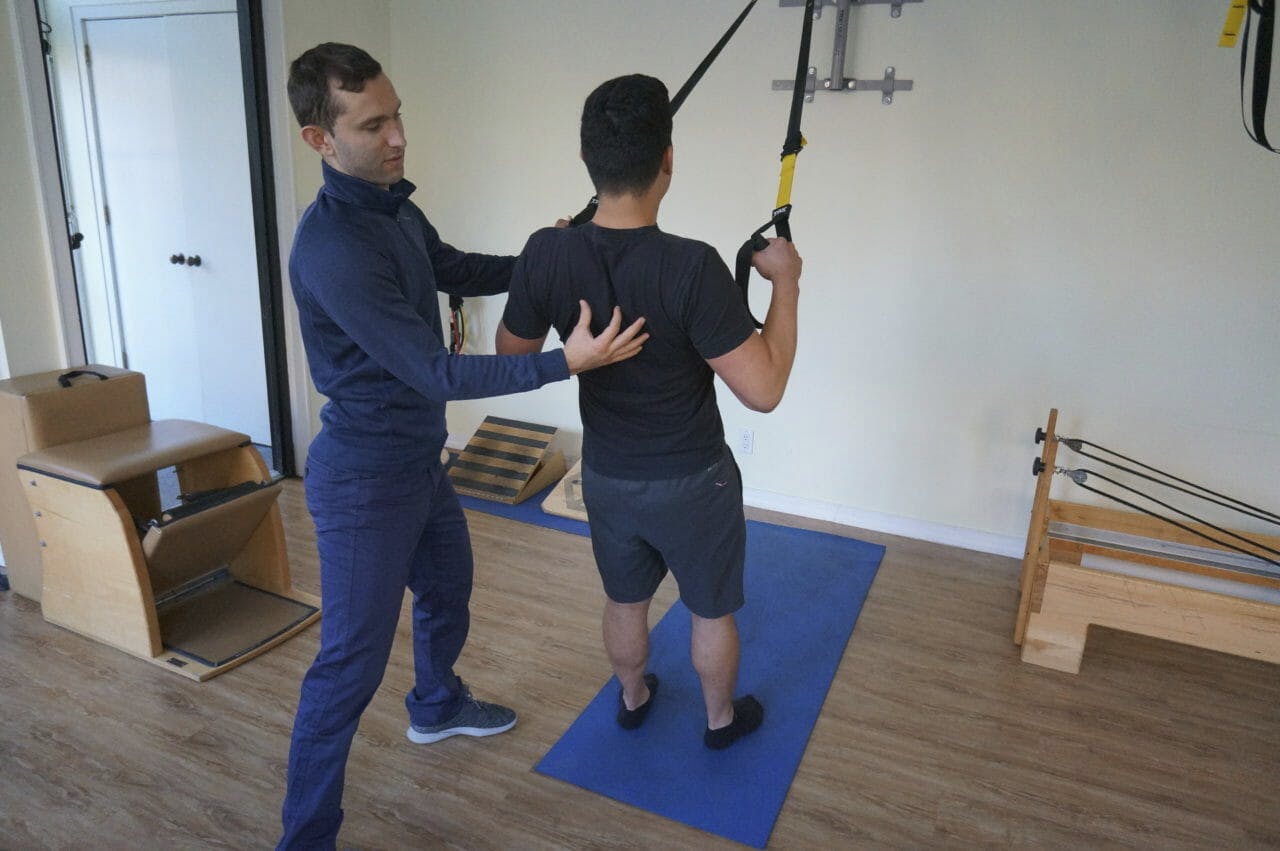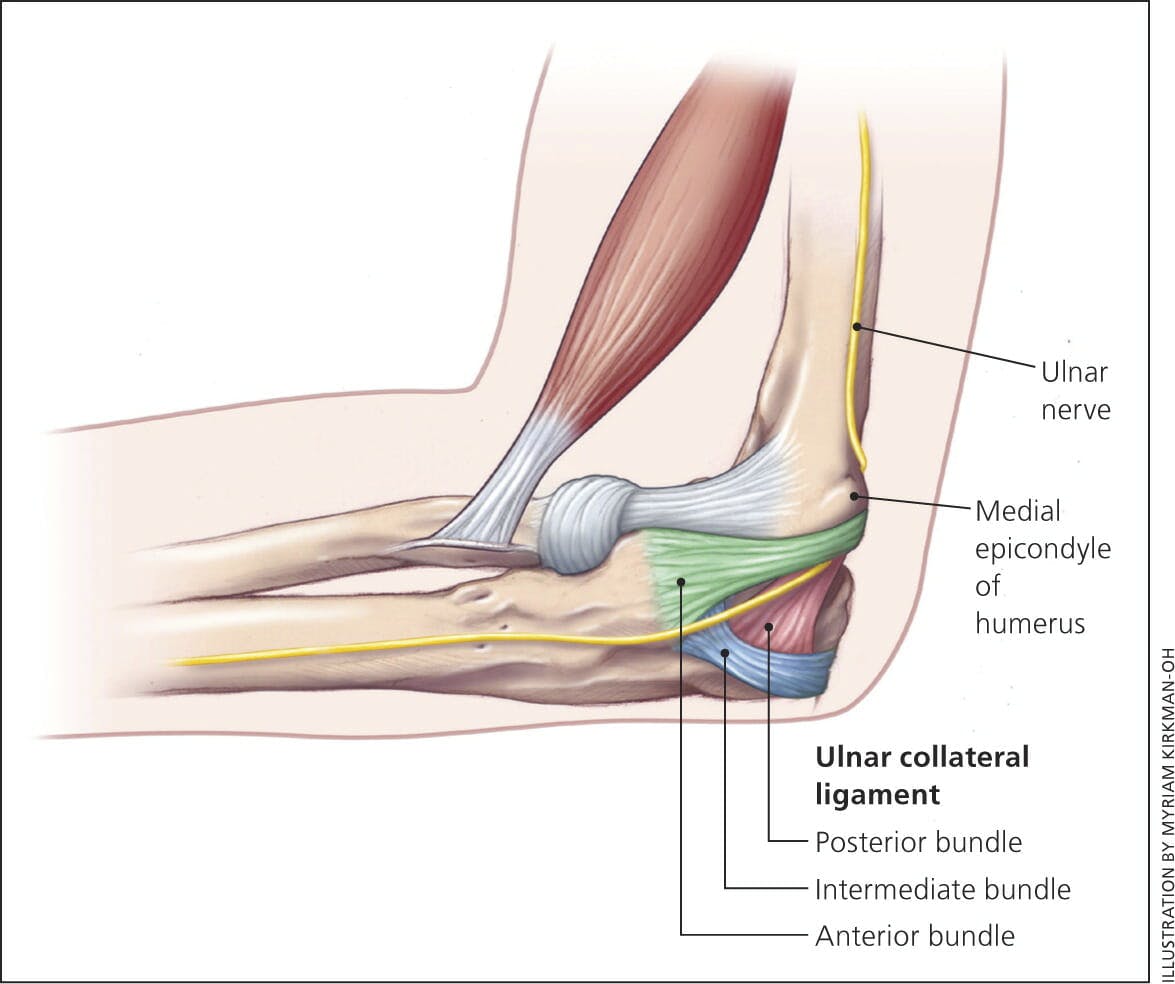Increasing shoulder range of motion after injury or surgery is key to recovery and shoulder performance. Genya Royfman, PT, DPT is a graduate of UC Santa Barbara and received her Doctorate of Physical Therapy from Hampton University. She’s been a part of the Park Sports team for about a year now and has a passion for treating shoulder injuries. Genya, who is a former high school football player and currently an avid rock climber, has herself had multiple shoulder surgeries and experiences with PT as a patient. When it comes to shoulder issues and recovery, Genya says clearly, “I can relate.”
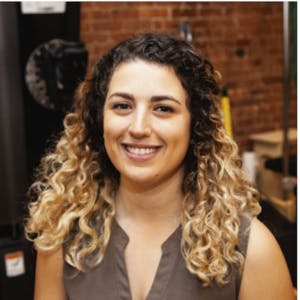
The Shoulder and injury.
The shoulder is a complex joint built to allow movement in many directions: forward, backward, around in a circle, and away from the body. Muscles and ligaments help keep the shoulder stable and secure in your shoulder socket. Injuries can occur whether you are an athlete, super active, or an occasionally active weekend adventurer or DIYer.
Quick overview of your shoulder.
Your shoulder joint is a ball-and-socket joint. The head of the humerus (upper arm bone) is the ball and the scapula (shoulder blade) forms the socket where the humerus sits.
The scapula and arm are connected to the body by multiple muscle and ligament attachments. The front of the scapula is also connected to the clavicle or collarbone through what is called the acromioclavicular joint.
As you move your arm around your body, your scapula must also move to maintain the ball and socket in normal alignment. Keeping this alignment steady and sturdy is a life long challenge. Injury to the multiple muscles and ligaments that keep everything functioning is quite common. Recovery is not always so simple however.
Range of Motion.
Shoulder Range of Motion or ROM is the measurement of movement around a specific joint or body part. ROM can become limited due to joint overuse, arthritis, or sudden trauma to the joint. Lack of ROM is a strong indicator of injury, not to mention, it can limit your daily functions and cause persistent pain and discomfort. Working with a physical therapist, you will increase your range of motion and strengthen your joint. This occurs through joint manipulation and specialized exercises.
Like all Park Sports therapists, Genya performs detailed research into her client’s history and current injury before any treatment begins. After Genya creates a plan for her patient’s shoulder injury treatment or post-op plan in conjunction with her patient’s surgeon, often she is initially focused on strengthening scapula involvement. “I make sure the scapula is properly engaged, people tend to forget about the shoulder blade.” There are a number of early stage treatment exercises she typically begins with. These will help work the scapula and also test early treatment ROM.
Shoulder Blade Squeezes.
It is important to engage the upper trapezius muscles at the start of treatment. Genya’s shoulder blade squeezes address the mid to lower trap muscles. As a result, they loosen the upper trap muscles. This helps to relieve neck and shoulder discomfort. Your trap muscle consists of three parts and has many different functions—lifting your shoulders, holding up your neck and head and moving your shoulder blade. When this muscle is tight, it affects your entire body. Tight traps are significant enough to influence your training, recovery, and overall well being.
Scapular Wall Slide.
The Scapular Wall Slide is another early stage exercise designed to improve scapula stabilization. Genya positions her patient in front of a wall and squeezes their shoulder blades. The patient then slides their forearm up the wall maintaining contact with the wall the entire time. Wall slides train the muscles surrounding the scapula for both dynamic and static stability – controlling the position of the scapula during arm movement.
Treatment length varies.
Treatment length varies from patient to patient depending many factors. Very recently, Genya discharged a patient that had been with her for an extended period of time recovering from a massive shoulder injury. “It was an emotional experience for both of us, lots of laughing, crying, and hard work. She now has full range of motion and a healthily functioning shoulder. She is pain free and active again. I am so proud of our work together!”
Our New Williamsburg Facility.
If you have shoulder soreness, tightness or an injury call us directly for a free evaluation. We offer free consultations and direct access to all of our facilities including our brand new state of the art center at 490 Driggs Avenue in Williamsburg, Brooklyn.
.png?auto=format&auto=compress&h=150)

